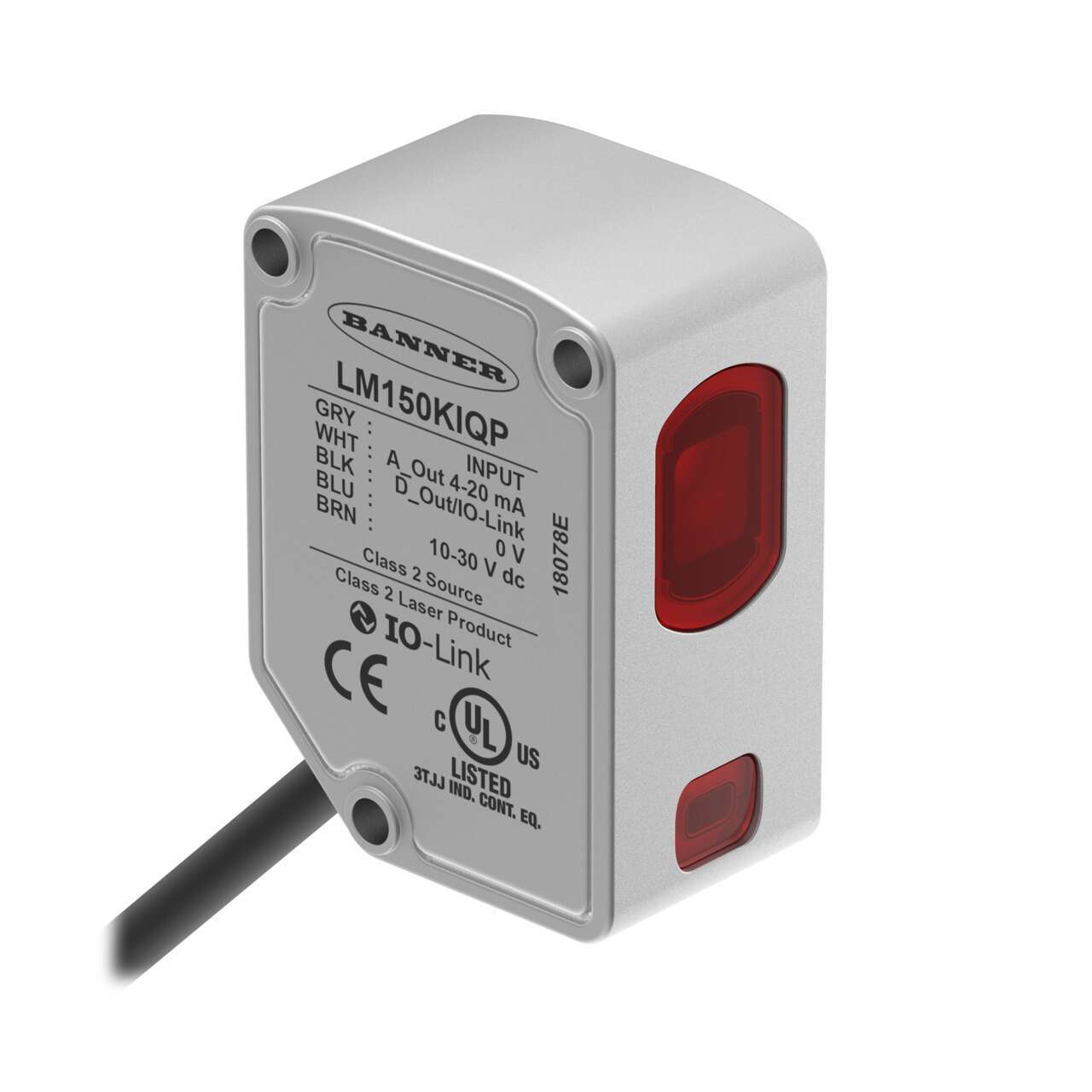Precision Measurement
Solve Applications with the Tightest Tolerances
Precise measurement applications can be some of the most challenging to solve. Extremely tight tolerance requirements demand a reliable solution that can measure parts in micrometers to detect the smallest variations in part size, thickness, orientation, placement, and more.
Ensuring parts meet strict quality standards can help reduce problems downstream and reduce the risk of product recall due to imperfect parts.
Real world conditions—including variations in target color and reflectivity, fluctuations in ambient temperature, and vibration from improper mounting—can make precise measurement challenging, even for laser sensors that perform reliably in perfect laboratory conditions.
Even seemingly insignificant details, like pushing buttons on the sensor, can negatively impact the device's precision.
Therefore, it is important to understand the factors that can impact measurement precision in order to identify a solution that can overcome these challenges.
Keep reading to learn several key considerations to help you find the right sensor for your most precise measurement applications, or contact us to discuss your application with an expert.
WHY resolution isn't everything
For precise applications, measurement in micrometers is essential. However, while resolution is very important for precise applications, resolution specifications only represent a sensor’s performance in “best case” conditions.
Because of this, resolution specifications often do not provide a complete picture of a sensor’s capabilities in the real world and sometimes overstate sensor performance.
Therefore, it is important to consider the resolution specification in combination with other indicators of the sensor’scapabilities.
In discrete sensing applications, it is also important to consider the sensor’s repeatability (how reliably the sensor can repeat the same measurement in the same conditions) and the minimum object separation (the minimum distance a target must be from the background to be reliably detected).
For analog applications, it is important to consider both the sensor’s resolution and its linearity (how closely the analog output approximates a straight line across the measuring range) to ensure a reliable output across the full range of the sensor.
When combined with resolution, these additional specifications provide a more complete picture of sensor performance in the real world.
Real World Targets and Temperature Fluctuation
Real world targets are often difficult to measure consistently. Depending on the industry and application, objects may be very dark (low reflectivity), glossy (high reflectivity), or contain multiple color transitions—all of which can significantly impact measurement reliability.
To mitigate this issue, some laser measurement sensors like the LM Series feature automatic gain adjustment, which means the sensor dynamically reduces or increases its power based on the reflectivity of the target. This ensures targets of varying colors and reflectivity are all measured reliably.
Precision measurement can also be greatly affected by changes in ambient temperature. For some sensors, temperature fluctuations of even a few degrees up or down throughout the day can cause the sensor’s measurement error to double, eliminating any benefit of a precision sensor. Therefore, it is essential to choose a sensor with high thermal stability for reliable measurement regardless of the surrounding temperatures.
Remote Configuration & Monitoring for Precision
Finally, choosing the right configuration and mounting options can help ensure the precision of a sensor.
Mounting stability is crucial for a precision measurement sensor. Even with the best specifications, if a precision sensor isn’t mounted securely, measurements will not be reliable. To reduce the risk of measurement error, ensure that the sensor can be securely fastened to the mounting fixture and kept away from excessive vibration.
Remote configuration and monitoring options, via IO-Link or Banner's RSD1 remote sensor display, enable the sensor to be configured without pushing buttons directly on the device. This reduces the risk of button movement interfering with the sensor's precision.
Remote configuration and monitoring options also enable users to gather health and performance data from the sensor, which allows manufacturers to predict maintenance requirements and make data-driven decisions.
Precision Measurement Sensor
El sensor de medición de precisión de la Serie LM ofrece el mejor rendimiento de su clase y la estabilidad del mundo real en un dispositivo compacto con una experiencia de usuario intuitiva.
- Mediciones precisas con resolución de 0.004 mm.
- Velocidad de respuesta rápida de 0.5 ms y tasa de muestreo de 0.25 ms
- Carcasa compacta diseñada para caber en espacios pequeños
- Carcasa térmicamente estable y montaje seguro para una estabilidad real.
- Discreta con IO-Link y salida analógica de 4-20 mA
- Acero inoxidable IP67 y Grado 316 para compatibilidad química
- Pantalla de Sensor Remoto (RSD) opcional para monitoreo y configuración remotos
Problem-Solving Laser Measurement Sensor
Sensores de distancia láser versátiles y robustos que ofrecen un rendimiento superior y son capaces de detectar cambios en la distancia de un milímetro.
- Salida discreta, analógica (0 to 10 V or 4 to 20 mA), para detección de objetos claros y modelos de IO-Link.
- Rango de detección confiable desde cerca de 25 mm y hasta 610 mm
- Detecta objetivos en una gran variedad de colores, materiales y superficies basado en la distancia
- El modo de enseñanza dual (intensidad + distancia) es ideal para aplicaciones de corrección de error y permite la detección de objetos claros sin necesidad de un retro reflector.
- Carcasa robusta de acero inoxidable clasificada IP69K grado FDA














